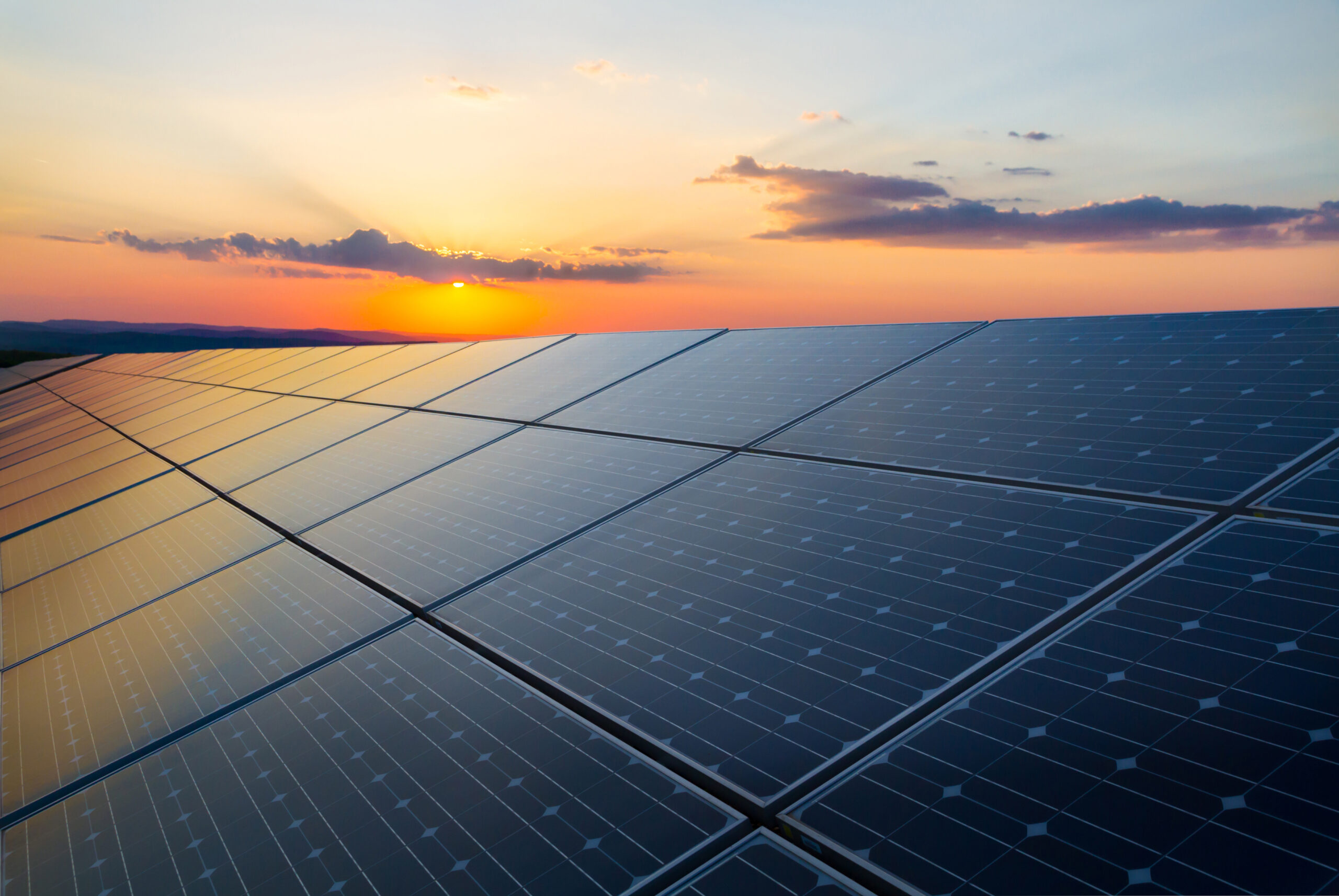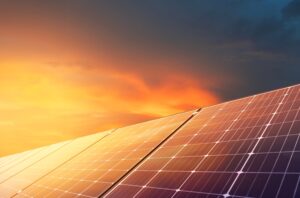13/11/2024
The solar energy industry has seen rapid development over the past three decades. In particular, the solar industry witnessed dramatic advances in the efficiency of solar cells and modules in the first two decades of the 21st century, making large-scale photovoltaic (PV) power generation genuinely technically and economically feasible. This, in turn, brought about further cost reductions through economies of scale, and as a result, solar energy is now cheaper than many fossil fuels, with costs ranging between $0.90 and $1.50 per watt.
Patent filing trends in the PV sector have traditionally reflected the industry’s focus on advancements in efficiency. For instance, between 2002 and 2019, there was a dramatic 678% increase in the number of Patent Cooperation Treaty (PCT) applications related to solar power, and by 2019, over half of all renewable energy-related PCT applications were linked to solar technologies, compared to just over a quarter in 2002. [1] However, as silicon-based panels approach their theoretical maximum efficiency limits and the margin for improvement becomes increasingly narrow, there are recent signs that indicate the focus of innovation within the industry has shifted.
Recent patent filing trends reflect a growing emphasis on non-power generating technologies. For example, as shown in Figure 1, the number of patent filings directed to structural details of PV modules other than those related to light conversion have nearly doubled in the past 5 years.
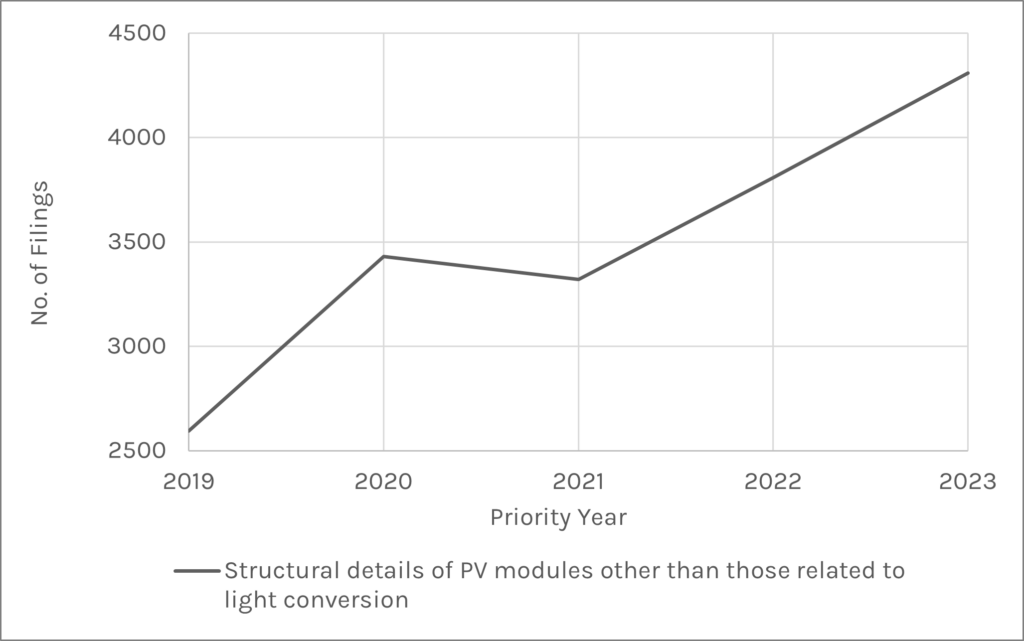
One of the key advancements in such non-power generation aspects of the solar power sector can be found in the digitalisation of automated monitoring and maintenance systems.
These are important technologies, as they enhance the efficiency and prolong the working lifespan of existing equipment. Predicting the maintenance needs of large-scale solar farms using automated systems, such as SCADA-based systems, drones, and IoT-enabled devices, not only enhances the performance of the solar farms but also significantly reduces operational costs by preventing issues from escalating into costly problems.
In particular, the use of automated monitoring for PV module cleaning has gained considerable attention in recent years. This is evidenced by a steady rise in patent filings in this area, as shown in Figure 2, reflecting growing commercial interest in the efficient long term maintenance and cleaning of solar panels.
Predictive maintenance using advanced algorithms and AI to forecast equipment failures can also minimise downtime and reduce maintenance costs. As shown in Figure 2, patent filings relating to predictive maintenance technologies in the solar sector have also surged dramatically in the current decade, reflecting the industry’s shift toward integrating AI and IoT into large-scale solar power generation.
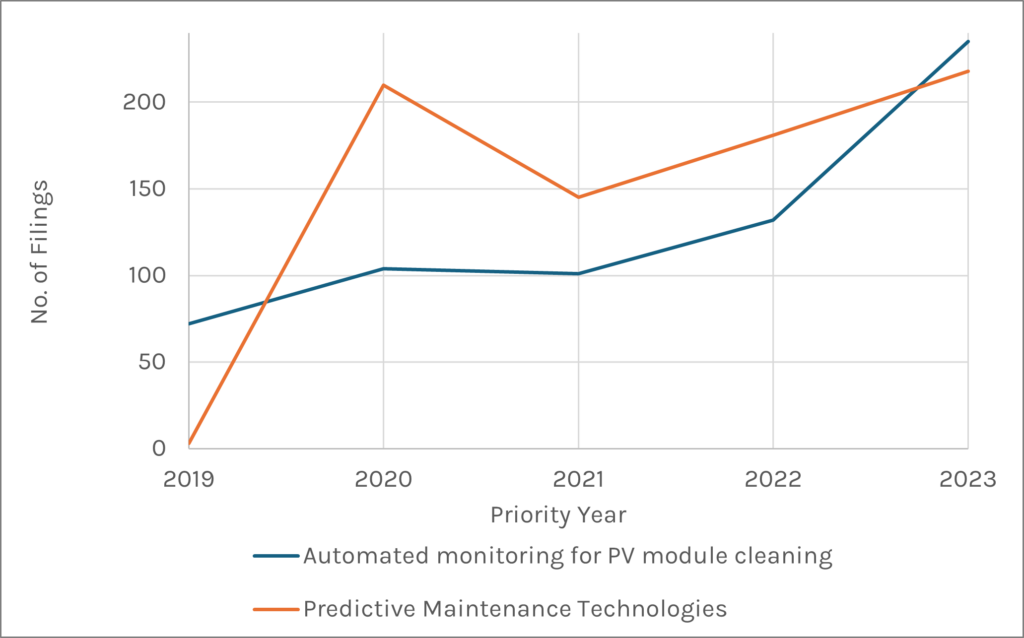
However, despite this surge in innovation, securing patents for digitalisation-related technologies in the solar sector, which can serve as useful tools for protecting commercial interests, presents unique challenges. In particular, in Europe, the patentability of AI, software, and algorithm-based inventions is examined based on their ability to solve a “technical problem”. This requirement means that patent applications directed to such inventions need to clearly convey a technical effect beyond the software or algorithm itself. This may explain the considerably lower grant rate for patent applications directed to automated monitoring for PV module cleaning and predictive PV maintenance technologies (i.e. the same group of applications discussed in Figure 2) compared to other IP5 jurisdictions, as depicted in Figure 3.
Therefore, building a successful patent portfolio in the field of solar digitalisation requires not only innovative technologies but also careful legal considerations regarding how these innovations are presented in patent applications.
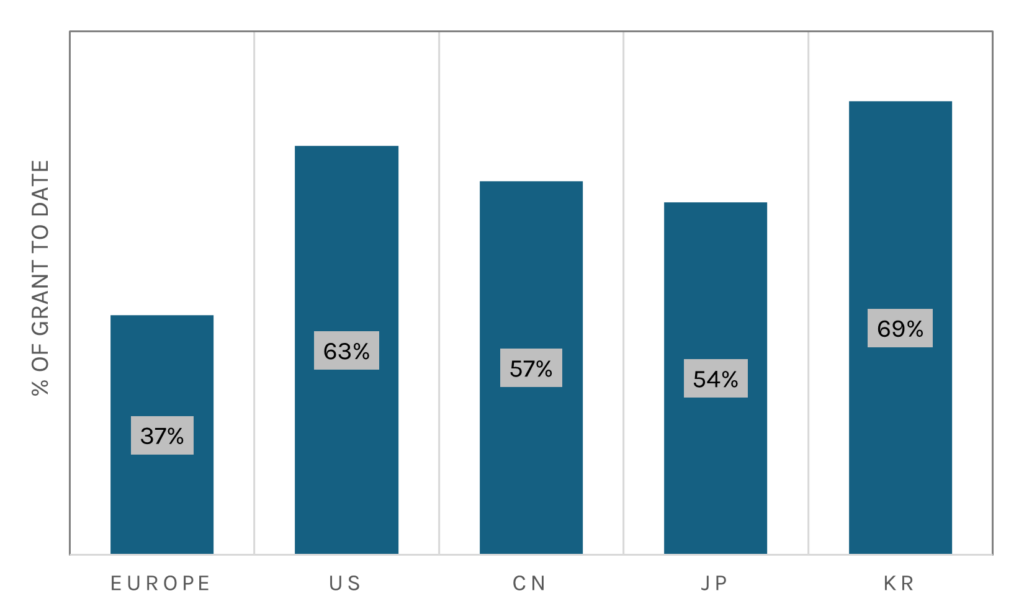
Whilst the era of rapid efficiency improvements in Si-based PV modules and cells may be nearing its limit, the solar industry remains far from reaching a plateau in innovation. In particular, innovations utilising AI, IoT, and automation are expected to continue growing, as these technologies become increasingly vital for the efficient and reliable operation of large-scale solar plants. Digital innovations in automated monitoring, predictive maintenance, and grid management, are good examples of new frontiers in solar energy, and it is becoming clear that the future of solar power will be shaped not only by advances in power generation but also by the digital technologies that support and enhance the solar power industry.
Read the next article of our Digitalisation Mini-Series here: Smart grid – a blind spot?
Read the previous article of our Digitalisation Mini-Series here: ‘Generative AI and Renewable Energy’
This article is for general information only. Its content is not a statement of the law on any subject and does not constitute advice. Please contact Reddie & Grose LLP for advice before taking any action in reliance on it.
[1] WIPO, “Patenting trends in renewable energy”, WIPO Magazine 1/2020, March 2020.
